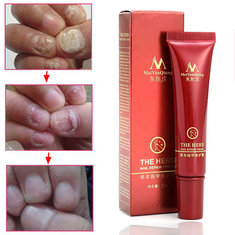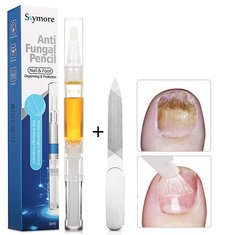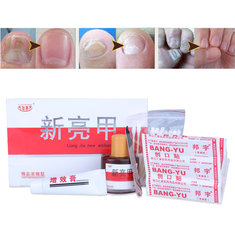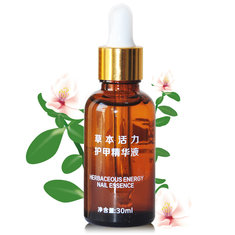What are Acrylic Nails?
Acrylic nails are also known as false or artificial nails. They consist of liquid monomer and powder polymer that can be shaped after it dries and need to be maintained every two weeks. The term of acrylic nails usually refers to all types of false nails such as silk, gel and fiber nails. Millions of women across the world have acrylic nails applied over their natural nails, from different reasons – usually because their own nails are easily broken and cannot develop desired length, to mask and cover discolored or weak nails or just because they want their nails to look more attractive.
Can Acrylic Nails Damage Natural Nails?
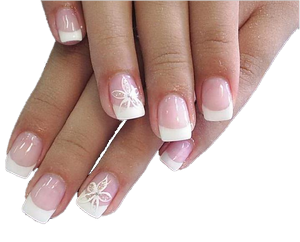 In majority of cases acrylic nails are fitted properly and they cannot cause any problems. However, if acrylic nails are not applied correctly or in case of their long term use, they can badly damage the nail bed and obstruct natural growth of the nails. Obstruction in the nail growth may cause deformed nails which can result in various defects like discolored nails or thickened nails. Sometimes, though rarely a skin irritation (dermatitis) of nail folds (the skin around the nail) as a reaction to acrylic nails components may occur. This can be complicated with a bacterial infection. However, the most frequent problem related to acrylic nails is onychomycosis or fungal infection of the nails.
In majority of cases acrylic nails are fitted properly and they cannot cause any problems. However, if acrylic nails are not applied correctly or in case of their long term use, they can badly damage the nail bed and obstruct natural growth of the nails. Obstruction in the nail growth may cause deformed nails which can result in various defects like discolored nails or thickened nails. Sometimes, though rarely a skin irritation (dermatitis) of nail folds (the skin around the nail) as a reaction to acrylic nails components may occur. This can be complicated with a bacterial infection. However, the most frequent problem related to acrylic nails is onychomycosis or fungal infection of the nails.
Fingernail Fungus Caused by Acrylic Nails
Fingernail fungus is the most widespread problem associated with acrylic nails. Acrylic nail fungus usually occurs when acrylic nails are inadequately fitted. The false nails cannot be infected by fungus since they are artificial, but the fungi can infects the real nail plate, nail bed and nail folds. If the right application method is not followed, the gap between the natural nail bed and acrylic nails may develop. This gap creates an ideal environment for the development of nail fungus. The fungus quickly grows and spreads along the nail plate and can cause different deformities of the nail. The fingernail may lose its shine and become discolored. Furthermore, it may thicken and as a result become crumble and easily broken. A prolonged infection that remains untreated may result in the nail plate deformity with the yellow color of the nail or its darkening and finally, the nail plate can detach from the nail bed. This condition is called onycholysis. The problem lies in the fact that infection is usually hidden under the nail and fungus cannot be identified until its different symptoms become clearly visible.
Causes of Acrylic Nail Fungus
Acrylic nail fungus infection occurs when the acrylic nail is not firmly sealed to the existing nail which forms a gap between two of these, where water can gets easily providing a perfect condition for fungus development and spreading given that fungi require warmth, darkness and moisture to develop and grow. Hence, it is important to be sure that the acrylic nails application is performed by a trained nail professional.
The most important cause of the development of acrylic nail fungus is poor hygiene. The most of beauty salons practice good hygiene using sterilized equipment and antibacterial products. However, in some salons hygiene is not on high level which is welcoming ground for the nail fungus infection to develop.
Therefore, professional fitting of acrylic nails in salon with excellent hygiene is advised to avoid acrylic nail infection. Also, any damage of the acrylic nail should be attended immediately, to get appropriate treatment prevent spreading of nail fungus infection.
Treatment – Tips to Treat Nail Fungus Caused by Acrylic Nails
What was supposed to be attractive and nice turned painful and ugly. Acrylic nail fungus can be persistent and unpleasant problem. Though, if recognized on time, acrylic nail fungus infection can be effectively treated. A few measures can be taken to treat this condition.
- Firstly, remove all the acrylic nails. Make sure that this is done by a professional who will remove the nails carefully. All artificial nails should be removed, even if just one nail is infected, to prevent spreading of the infection.
- The natural nails should be cut as short as possible. Don’t use a nail polish for a certain period to let the nails recover appropriately.
- Visit the doctor to identify the occurrence and severity of the infection and to prescribe appropriate treatment.
- Use the prescribed medication and some home remedies to deal with the nail fungus. There are a wide variety of natural, over-the-counter solutions that can be applied directly on infected nails. Some of the most popular homeopathic remedies for nail fungus are Zetaclear™, PurNail™, Nail-Rx™, Claripro™ and Funginix™ which contain Tea Tree Oil, Lemongrass Oil, Lavender Oil and other natural ingredients beneficial for infected nails and skin due to its antifungal properties. Some of these products (Zetaclear™) include oral spray and topical solution. Laser nail fungus treatment may also be an option.
- Nail fungus treatment may take from six months to a year to cure the infection, depending on the severity of acrylic nail fungus. Nevertheless, the first improvement should be visible after eight weeks.
Acrylic Nail Fungus Prevention
To prevent occurrence of the nail fungus caused by acrylic nails, try to avoid putting these on your natural nails. Maintain your daily nail hygiene on high levels. If you still want to apply them, make sure that this is done by a nail specialist under the excellent hygiene conditions. In case you suspect the fungus infection, take the immediate steps to solve the problem.


